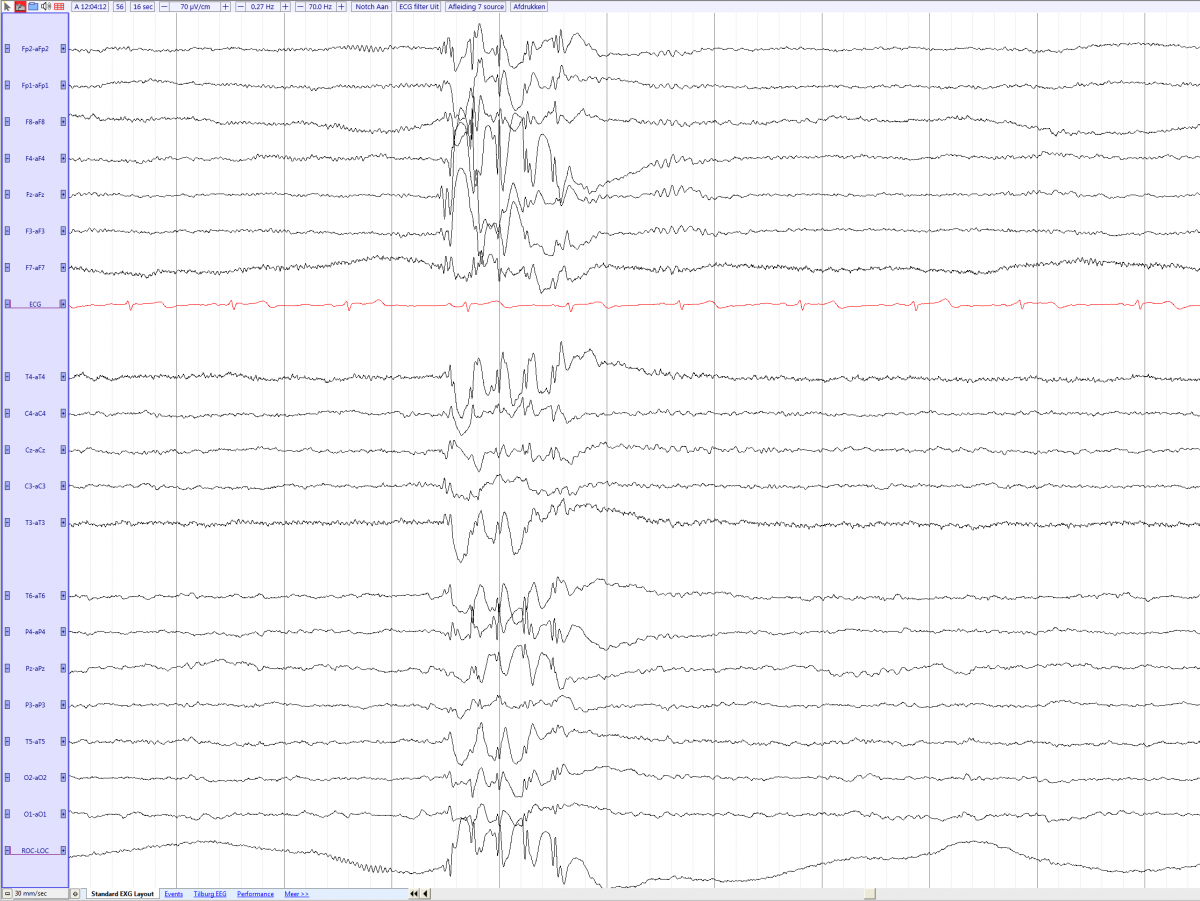Juvenile Myoclonic Epilepsy
From EEGpedia
Background
- Juvenile myoclonic epilepsy also known as JME or Janz syndrome
- Most common generalized epilepsy syndromes in adolescents
- 1 in 1000 children
- Seizures start between 5 and 16 years old
- Sleep deprivation and stress are two very common triggers of myoclonic jerks and tonic clonic seizures.
- Sometimes triggered by flickering light
Clinic
- Typically myoclonic jerks that occur after sleep.
- Sometimes the myoclonic jerks are only in the fingers causing the patient dropping things.
- During the myoclonic jerks the patients are normally awake.
- Most of the patients have generalized tonic-clonic seizures
- Absence seizures in around 30-40% of the patients
EEG
- Generalized 3- to 6-Hz Spike slow wave complex or most often Polyspikes slow wave complexlasting 1-20 seconds
- Occasionally, short periods generalized Spikes and sharp waves can also be seen.
- Photosensitivity in 50% of the patients
- Normal background rhythm
- Focal abnormalities in a small amount of patients
- A morning EEG is more sensitive (69% epileptiform discharges) compared to afternoon EEG
Generalized (poly)spike slow wave in a 15 year old male with JME (source)
